#Long-Range Hypersonic Weapon
Explore tagged Tumblr posts
Text

Long Range Hypersonic Weapon Transporter Erector Launchers participating in exercise Bamboo Eagle 24-3 on Nellis Air Force Base.
Also known as Dark Eagle, it is a intermediate-range surface-to-surface boost-glide hypersonic missile being developed for use by the United States Army. The United States Navy intends to procure a ship/submarine-launched variant of the missile.
22 notes
·
View notes
Text
US Army Faces Setback in Long-Range Hypersonic Weapon Development
The US Army has encountered a setback in the development of its Long-Range Hypersonic Weapon (LRHW) as a recent test launch was cancelled. Despite the setback, progress continues in offensive hypersonic weapon technology, holding immense strategic significance for the future of warfare.
0 notes
Text
✌️Leaked: Hypersonic Boost-Glide Weapons - Original Congress Document✌️
https://berndpulch.org/2024/08/24/%e2%9c%8c%ef%b8%8fleaked-hypersonic-boost-glide-weapons-original-congress-document%e2%9c%8c%ef%b8%8f/

#bernd pulch#original document#long range hypersonic missile#hypersonic booster-glide weapons#congress
0 notes
Text

Israel Executes Long Awaited Buy Of F-15IA Advanced Eagle Fighters
After a break of almost three decades, Israel has ordered more F-15s, which will spearhead its air force alongside F-35 stealth fighters.
Posted on Nov 7, 2024 12:54 PM EST
Israel will buy 25 F-15IA fighters, marking the first new Eagles that the country has acquired since November 1995, when it ordered F-15I Ra’am jets. This summer, Israel had been given U.S. approval to by as many as 50 F-15IAs, as well as upgrade its F-15Is. Whether more F-15s or upgrades are added, the current wars in the Middle East mean that further acquisitions of combat aircraft are likely.
Boeing
Israel will buy 25 F-15IA fighters, marking the first new Eagles that the country has acquired since November 1995, when it ordered F-15I Ra’am jets. This summer, Israel had been given U.S. approval to buy as many as 50 F-15IAs, as well as upgrade its F-15Is as part of an overall package valued at $18.82 billion that you can read about here. Whether more F-15s or upgrades are added, the current wars in the Middle East mean that further acquisitions of combat aircraft are likely.
The Israeli Ministry of Defense announced today that it was buying the 25 F-15IAs at a cost of $5.2 billion. The ministry signed the contract with manufacturer Boeing yesterday, noting that an option remains to buy the other 25 jets.

An earlier Boeing graphic showing a heavily armed F-15IA. Boeing
The Israeli Ministry of Defense confirmed that deliveries of the F-15IAs will start in 2031, with between four and six aircraft being supplied annually.
“This procurement marks a significant milestone in deepening the defense cooperation between Israel and the United States, reflecting their mutual commitment to regional security,” the Israeli Ministry of Defense said on X.

The director general of the Israeli Ministry of Defense, Maj. Gen. (res.) Eyal Zamir; the head of the Israeli Ministry of Defense’s Mission to the U.S., Aviram Hasson; and the Senior Deputy Head of the Mission, Offer Zavatzky, during the signing of the F-15IA deal yesterday. Israel Ministry of Defense
“The new F-15IA will be equipped with cutting-edge weapon systems, including state-of-the-art Israeli technologies,” the ministry added. “The upgraded aircraft will feature enhanced range capabilities, increased payload capacity, and improved performance across various operational scenarios.”
As we have discussed in the past, the F-15IA will be based on the F-15EX used by the U.S. Air Force.
Boeing and the U.S. Air Force have both heavily touted the aircraft’s range and stores-carrying capabilities as key features of the design. While this is seen as being particularly valuable for operations across the vast expanses of the Pacific with the U.S. Air Force, Israel has also long prized the Eagle for its ability to strike targets at long range with heavy loads of ordnance.
A USAF F-15EX Eagle II armed with 12 AIM-120 AMRAAMs.

A U.S. Air Force F-15EX Eagle II armed with 12 AIM-120 AMRAAMs. U.S. Air Force
USAF/SSgt Blake Wiles
As for the weapons Israel will likely procure to arm the F-15IA, the official press release when approval for the sale was granted mentioned only AIM-120 Advanced Medium-Range Air-to-Air Missile (AMRAAM) launchers as well as the internal M61A Vulcan cannons. As it stands, the current F-15I Ra’am carries almost the entire range of Israeli Air Force air-launched weapons, defensive and offensive, and from U.S. and domestic production.
The ability of the F-15IA to potentially carry outsize weapons, including hypersonic missiles, as well as simply larger numbers of legacy weapons, is also something that will very likely be of increasing interest to Israel. The recent operations against Iran have demonstrated Israel’s expanding use of air-launched ballistic missiles, which would also be a perfect fit to arm the F-15IA.

An Israeli Air Force F-16I armed with the Rampage air-launched ballistic missile. U.S. Air Force
For the Israeli Air Force, the 25 F-15IAs will provide an additional Eagle squadron, which will double the number of strike-optimized F-15s available to the service. Currently, the 25 F-15I Ra’am jets serve with 69 Squadron “Hammers” at Hatzerim Air Base.
The Israeli Air Force also operates squadrons flying the older F-15A-to-D Baz, which operate in air-to-air and air-to-ground capacities, but which are by now very long in the tooth, having first seen combat as long ago as 1979. Successively upgraded, and also bolstered through transfers from U.S. Air Force stocks, these jets are stationed at Tel Nof Air Base, and you can read more about them here.

Israeli Air Force F-15A-to-D Baz fighters from 106 Squadron “Tip of the Spear.” Amit Agronov
Israel’s continued demand for F-15s of any kind has seen the surviving Baz jets progressively upgraded to keep them in frontline service. Potentially, the incoming F-15IAs might replace one of the two Baz squadrons, but that remains unclear at this point.
There’s also the option to upgrade the F-15I Ra’am to a standard similar to the F-15IA — known as F-15I+ — although the Israeli Ministry of Defense didn’t mention the status of this in their announcement.

An Israeli Air Force F-15I Ra’am. Israeli Air Force
More generally, however, the F-15IA purchase is seen by Israel as an investment in long-term strategic capabilities, with these being under particular scrutiny right now as tensions with Iran continue to build, after several rounds of hostilities already this year. After all, the F-15 has — and will continue to be — Israel’s primary long-range strike weapon.
“The Ministry is executing a comprehensive strategy to enhance the IDF’s operational capabilities,” said the director general of the Israeli Ministry of Defense, Maj. Gen. (res.) Eyal Zamir. “We have secured procurement agreements worth nearly $40 billion since the onset of the war,” Zamir said, referring to the conflict that began in the Middle East after the surprise attack on Israel by Hamas militants on October 7, 2023.
Also part of this longer-term strategy of enhanced military capabilities is the purchase of a third squadron of F-35I Adir stealth fighters, earlier this year. An agreement for that deal was signed in June this year. Covering 25 F-35Is worth approximately $3 billion. This will expand the Israeli Air Force Adir fleet to 75 aircraft. The latest batch will begin to be delivered in 2028.
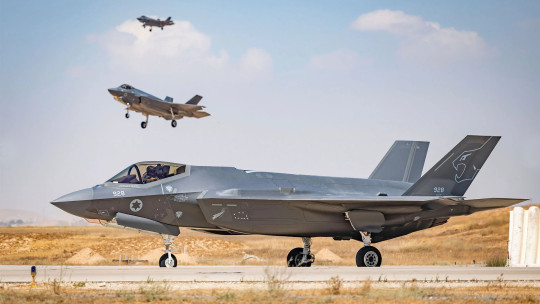
Israeli Air Force F-35I Adir stealth fighters. Israeli Air Force Israeli F-35I Adirs. Israeli Air Force
Buying the F-15IA and F-35I will provide the Israeli Air Force with two complementary platforms, both of which are among the most capable anywhere in the world, especially when it comes to long-range strike. Israeli F-15s, in particular, are also used for forward networking and command and control nodes, vital for managing long-range operations. On the other hand, both the F-15IA and F-35I are also more than efficient for air defense, including against drone threats, as well as air-to-ground operations closer to Israel, such as the ongoing conflicts in Gaza and Lebanon.
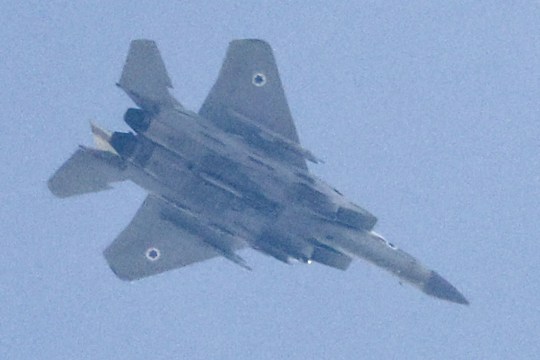
An Israeli Air Force F-15I flying along the border with the Gaza Strip near Sderot in southern Israel on October 27, 2023, amid battles between Israel and the Hamas movement. Photo by JACK GUEZ/AFP via Getty Images
Together, the Israeli Ministry of Defense described the joint F-15IA and F-35I acquisitions as “a historic enhancement of our air power and strategic reach — capabilities that proved crucial during the current war.”
That last statement would appear to be a direct reference to the Israeli Air Force’s retaliation strike on Iran last October 26, which came in response to Iran’s massive October 1 missile barrage on Israel. The Israeli strikes appear to have involved both F-15I and F-16I fighters, which largely launched exclusively standoff strikes from outside Iranian airspace.
Of course, Israeli interest in buying more F-15s goes back many years, but the developing security situation in the Middle East seems to have prompted a decision to finally be made.
The sale of 25 F-15IAs was obviously welcomed by Boeing.
“Boeing takes pride in its longstanding partnership with Israel, a relationship that dates back to our nation’s establishment,” said the President of Boeing Israel, Maj. Gen. (ret.) Ido Nehushtan.
While Boeing is now building F-15EXs for the U.S. Air Force, that service is currently looking to buy 98 of the jets, so another batch of 25 F-15IAs is significant. It could also help secure further export orders. Indonesia has formally committed to buying up to 24 Advanced Eagles, but the deal is yet to be signed off by the U.S. government, while Poland has also been earmarked as a potential customer.

An Indonesian delegation, led by Minister of Defense Prabowo Subianto (center) during a visit to Boeing’s St. Louis facility. Boeing
There is also growing speculation that Israel could be poised to buy more AH-64 attack helicopters from Boeing. Much has been made of the efforts of a handful of Israeli Air Force AH-64s to intervene on October 7, 2023, and it seems increasingly attack helicopters, rather than drones, are being seen as critical to counter any such incursions in the future. The Apaches have meanwhile become an important tool to deal with hostile drone incursions into Israeli airspace, too.
Long before October 7, the Israeli Air Force had been pushing to acquire another 40 of the latest AH-64E versions and earlier this year, it was reported that the sale of 12 AH-64Es was being discussed between the Israeli Ministry of Defense and officials from the Pentagon and U.S. State Department.
When asked recently about a potential Israeli AH-64E order, a Boeing spokesperson told TWZ that they “suspect that we will see additional requests coming in from Israel for these capabilities.”
For the time being, the F-15IA is headed to Israel, with the announcement of a formal order. With the Israeli Air Force facing current and future challenges in the Middle East, it’s no surprise that the tried and tested Eagle has been selected to help the country maintain its tactical superiority in the region.
Contact the author: [email protected]
14 notes
·
View notes
Text
France gives Ukraine licence to fire long-range missiles at Russia
Jean-Noël Barrot, the foreign minister, said it was vital for Europe’s security to supply weapons such as the Scalp, the French equivalent of Storm Shadow
France appears to have given Ukraine approval to fire French-made Scalp long-range missiles into Russia “in the logics of self-defence”, following similar moves by America and Britain — but has not revealed whether they have yet been used.
Jean-Noël Barrot, the foreign minister, said in an interview with the BBC’s Laura Kuenssberg to be broadcast on Sunday that the West should not put limits on support for Ukraine against Russia and “not set and express red lines”.
President Putin has vowed to increase production of his country’s new hypersonic intermediate-range Oreshnik missile following its first use in an attack on the Ukrainian city of Dnipro on Thursday. Russian defence officials have pointed out that the weapon’s range would allow it to be used against European cities.
Nato and Ukraine are expected to hold emergency talks on Tuesday to discuss the escalation in the two-and-a-half-year conflict, which follows North Korea’s decision to send troops to fight alongside Russian forces. Some 10,000 of them are believed to be in Russia’s Kursk region, ready to enter combat in Ukraine “soon”, according to Lloyd Austin, the US defence secretary.

Barrot said: “We will support Ukraine as intensely and as long as necessary. Why? Because it is our security that is at stake. Each time the Russian army progresses by one square kilometre, the threat gets one square kilometre closer to Europe.”
***Oh sure, why not?

10 notes
·
View notes
Text
He reserves the right to attack any nation that attacks Russia, and that includes the U.S. and NATO who are allowing their long-range missiles to be fired into Russian territory
Leo Hohmann
Nov 21, 2024
Russian President Putin gave a 7-minute speech today and explained that they used a novel system, a medium-range missile with a hypersonic payload in its strike in Ukraine. It was essentially a test that worked perfectly.
As part of what Putin called a “combat test,” the hypersonic missile, dubbed Hazel, successfully struck a military-industrial facility in the Ukrainian city of Dnipro, the Russian president added.
The strike was a response to Ukrainian attacks on military facilities located on internationally recognized Russian territory, the president stated. Kiev’s forces launched the strikes on Tuesday and Thursday, using US-made ATACMS and HIMARS systems as well as British-made Storm Shadow missiles, he said.
The Storm Shadow attacks led to at least one Russian death and multiple injuries, Putin said. He said it is becoming a global war.
You can watch Putin’s entire 7-minute speech here.
On Thursday, Russian officials also threatened to attack a new U.S. ballistic missile base in Poland with what a Kremlin spokeswoman called “advanced weapons.” The base just opened on November 13.
“Given the nature and level of threats posed by such Western military facilities, the missile defense base in Poland has long been added to the list of priority targets for potential destruction, which, if necessary, can be executed with a wide range of advanced weapons,” Russian Foreign Ministry spokeswoman Maria Zakharova said, according to Reuters on Thursday.
Moscow reserves the right to strike the military facilities of countries that allow their weapons to be used against Russian territory, President Vladimir Putin has said.
The head of state gave a public address on Thursday, promising a decisive response to any aggression.
10 notes
·
View notes
Text
LONDON (Reuters) -Russia appears to have suffered a "catastrophic failure" in a test of its Sarmat missile, a key weapon in the modernisation of its nuclear arsenal, according to arms experts who have analysed satellite images of the launch site.
The images captured by Maxar on Sept. 21 show a crater about 60 metres (200 feet) wide at the launch silo at the Plesetsk Cosmodrome in northern Russia. They reveal extensive damage that was not visible in pictures taken earlier in the month.
The RS-28 Sarmat intercontinental ballistic missile is designed to deliver nuclear warheads to strike targets thousands of miles away in the United States or Europe, but its development has been dogged by delays and testing setbacks.
"By all indications, it was a failed test. It's a big hole in the ground," said Pavel Podvig, an analyst based in Geneva, who runs the Russian Nuclear Forces project. "There was a serious incident with the missile and the silo."
Timothy Wright, research associate at the International Institute for Strategic Studies (IISS) in London, said the destruction of the area immediately surrounding the missile silo was suggestive of a failure soon after ignition.
"One possible cause is that the first stage (booster) either failed to ignite properly or suffered from a catastrophic mechanical failure, causing the missile to fall back into or land closely adjacent to the silo and explode," he told Reuters.
James Acton, nuclear specialist at the Carnegie Endowment for International Peace, posted on X that the before-and-after satellite images were "very persuasive that there was a big explosion" and said he was convinced that a Sarmat test had failed.
The Kremlin referred questions on Sarmat to the defence ministry. The ministry did not respond to a Reuters request for comment and has made no announcements about planned Sarmat tests in recent days.
The U.S. and its allies are closely watching Russia's development of its nuclear arsenal at a time when the war in Ukraine has pushed tensions between Moscow and the West to the most dangerous point for more than 60 years.
Since the start of the conflict, President Vladimir Putin has said repeatedly that Russia has the biggest and most advanced nuclear arsenal in the world, and warned the West not to cross a threshold that could lead to nuclear war.
REPEATED SETBACKS
The 35-metre-long RS-28 Sarmat, known in the West as Satan II, has a range of 18,000 km (11,000 miles) and a launch weight of over 208 tonnes. Russian media say it can carry up to 16 independently targetable nuclear warheads as well as Avangard hypersonic glide vehicles, a new system that Putin has said is unmatched by Russia's enemies.
Russia had at one point said the Sarmat would be ready by 2018, replacing the Soviet-era SS-18, but the date for deployment has been repeatedly pushed back.
Putin said in October 2023 that Russia had almost completed work on the missile. His defence minister at the time, Sergei Shoigu, said it was set to form "the basis of Russia's ground-based strategic nuclear forces".
IISS analyst Wright said a test failure did not necessarily mean that the Sarmat programme was in jeopardy.
"However, this is the fourth successive test failure of Sarmat which at the very least will push back its already delayed introduction into service even further and at most might raise questions about the programme’s viability," he said.
Wright said the damage at Plesetsk - a test site surrounded by forest in the Arkhangelsk region, some 800 km (500 miles) north of Moscow - would also impact the Sarmat programme.
The delays would put pressure on the serviceability and readiness of the ageing SS-18s the Sarmat is meant to replace, as they will have to remain in service for longer than expected, Wright said.
Nikolai Sokov, a former Russian and Soviet arms control official, said he expected Moscow to persist with the Sarmat, a product of the Makeyev Rocket Design Bureau.
He said the Russian military had shown itself keen to preserve competition between rival designers and would therefore be reluctant to depend on Makeyev's rival, the Moscow Institute of Thermal Technology, as the single source of all missiles.

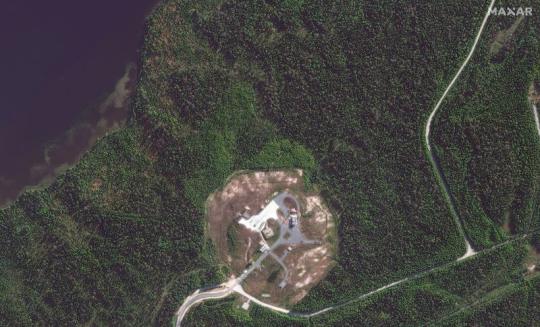
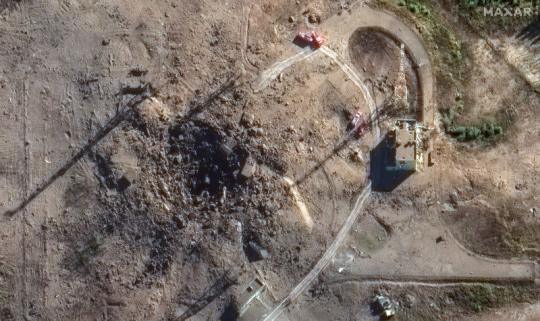
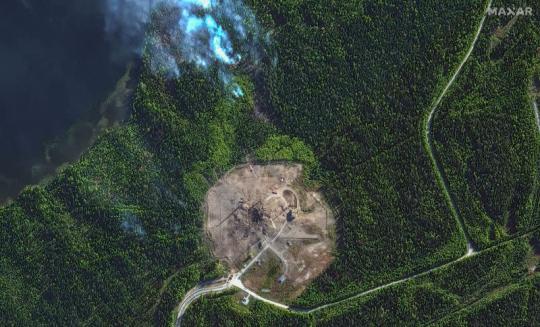
5 notes
·
View notes
Text
Russia’s use of the Oreshnik hypersonic intermediate-range ballistic missile on the territory of Ukraine has forced London to take a more cautious approach regarding strikes with long-range weapons deep inside Russia, the country’s ambassador to the UK Andrey Kelin said.
“Not that they [London’s representatives] were scared, but overall they realized that a completely new factor had appeared on the scene – that’s the first thing. The second is that we have retaliated for the use of Storm Shadow [long-range missiles] deep inside Russian territory. That’s obvious as well. There is a sense that they are being a little more cautious, a little more balanced in their approach to this issue. And, in fact,
Read More
#russian#russian politics#russia#uk news#united kingdom#uk politics#uk#oreshnik#russia ukraine war#russia ukraine conflict#russia ukraine crisis#russia ukraine today
3 notes
·
View notes
Text
How The New Russian Missiles Are Changing The Game
Via B at Moon of Alabama
To describe a weapon system as a game changer on the battlefield is always open to be ridiculed. Many of the weapon systems that have been delivered to Ukraine were called game changing but failed to make any difference in the outcome of that war.
So why did I call the new Russian Oreshnik missile a 'game changer'?
There are several reasons.
For one the missile with its 36 kinetic war heads is an unexpected response to the U.S. abolition of the Intermediate Range Nuclear Force (INF) treaty. The U.S. had hoped that the stationing of nuclear missiles in Europe might give it an advantage over Russia. Oreshnik denies that advantage WITHOUT resorting to nuclear force.
Any U.S. attempt to pressure Russia into a situation where it would either have to concede to the U.S. or to go nuclear has been demolished.
This is most visible in Ukraine. Over the two plus years of the war the U.S. has used a 'boiling the frog' strategy against Russia. It increased the temperature by slowly increasing the reach and lethality of the weapons it has provided to Ukraine. In each such step, the delivery of tanks, of Himars, of ATAMACs, of allowing Ukraine to use these on Russian grounds, was declared to be a move across imaginary Russian red lines. Each such step was accompanied by propaganda which claimed that Russia was looking into a nuclear response.
The aim was to push Russia into a situation where it could either make concessions over Ukraine or use nuclear weapons. The U.S. was sure that Russia would refrain from the later because it would put Russia into the position of an international pariah. By going nuclear it would lose support from its allies in China and beyond. It would also risk an all out nuclear war.
The strategy would probably have worked if Russia had not found an asymmetric response against it. It now has non-nuclear weapons, (the Oreshnik will not be the only one), which allow it to apply the equivalent of nuclear strikes without the dirty side effects of actually going nuclear.
Russia's announcement that future Oreshnik deployments will come under the command of its Strategic Forces -which so far have only been nuclear. This is a clear sign that these new weapons are seen as having similar strategic effects.
The kinetic concept of the Oreshnik payload is not a new one. Mass times speed is the amount of destructive energy these can deliver. Being hypersonic and hitting the targets with Mach 10 allows even small penetrators to have strong, explosive like effects.
In the early 1980s president Reagan's Strategic Defense Initiative included several attempts to introduce kinetic weapons. 'Rods from God' (and later 'Brilliant Pebbles') were conceptualized as kinetic darts to be launched from satellites to hit Soviet ICBM missiles:
A system described in the 2003 United States Air Force report called Hypervelocity Rod Bundles was that of 20-foot-long (6.1 m), 1-foot-diameter (0.30 m) tungsten rods that are satellite-controlled and have global strike capability, with impact speeds of Mach 10. The bomb would naturally contain large kinetic energy because it moves at orbital velocities, around 8 kilometres per second (26,000 ft/s; Mach 24) in orbit and 3 kilometres per second (9,800 ft/s; Mach 8.8) at impact. As the rod reenters Earth's atmosphere, it would lose most of its velocity, but the remaining energy would cause considerable damage. Some systems are quoted as having the yield of a small tactical nuclear bomb. These designs are envisioned as a bunker buster.
None came from it. The envisioned penetrators had to be too large and too heavy to be positioned in space. The huge 'telephone pole' size of the penetrators was need because these would burn up during the hypersonic flight through the atmosphere.
The penetrators Oreshnik is using are much smaller.
Russia seems to have solved some general physical problems of objects flying at hypersonic speed. In March 2018 Russia's president Vladimir Putin announced the introduction of several new weapons designed to penetrate U.S. missile defenses. One of these was the hypersonic glide vehicle now known as Avangard:
The use of new composite materials has made it possible to enable the gliding cruise bloc to make a long-distance guided flight practically in conditions of plasma formation. It flies to its target like a meteorite, like a ball of fire. The temperature on its surface reaches 1,600–2,000 degrees Celsius but the cruise bloc is reliably guided. ... We are well aware that a number of other countries are developing advanced weapons with new physical properties. We have every reason to believe that we are one step ahead there as well – at any rate, in the most essential areas.
I have since been looking for what 'new physical properties' or principles Russian scientist might have discovered to solve the problems of guided hypersonic travel within a plasma envelope. Nothing has come up so far. But the fact that Oreshnik is using relative small guided projectiles at hypersonic speed makes it likely that the new physical properties or principles the Russians discovered have also been applied to this weapon.
Until those basic scientific discoveries become known in the west there will be no chance for it to make weapons that can match the characteristics of Oreshnik and Avanguard.
Oreshnik is, so far, a non nuclear weapon with a limited (5,000 kilometer) range. But there is nothing in principle that hinders Russia from equipping an ICBM missile with similar non-nuclear capabilities. It would make non-nuclear strikes by Russia on U.S. grounds, or more likely on U.S. foreign bases and aircraft carriers, possible.
But those facts, and their consequences, have yet to penetrate the minds of western decision makers.
Even after the Oreshnik strike happened the U.S. continued to pin prick Russia by guiding Ukraine to fire ATAMAC missiles against targets in Russia. Yesterday the Russian Ministry of Defense announced, uncharacteristically, that two such attacks had taken place:
On 23 November, the enemy fired five U.S.-made ATACMS operational-tactical missiles at a position of an S-400 anti-aircraft battalion near Lotarevka (37 kilometres north-west of Kursk). During a surface-to-air battle, a Pantsir AAMG crew protecting the battalion destroyed three ATACMS missiles, and two hit their intended targets. ... On 25 November, the Kiev regime delivered one more strike by eight ATACMS operational-tactical missiles at the Kursk-Vostochny airfield (near Khalino). Seven missile were shot down by S-400 SAM and Pantsir AAMG systems, one missile hit the assigned target.
Militarily these strikes are irrelevant. But they demonstrate that the U.S. is still trying to 'boil the frog' even after it has escaped from the vessel. Russia has, according to Putin, several Oreshnik and similar weapons ready to launch.
The potential target for such missiles are obvious:
MOSCOW, November 21. /TASS/. The US missile defense base in Poland has long been considered a priority target for potential neutralization by the Russian Armed Forces, Foreign Ministry Spokeswoman Maria Zakharova stated during a briefing. "Given the level of threats posed by such Western military facilities, the missile defense base in Poland has long been included among the priority targets for potential neutralization. If necessary, this can be achieved using a wide range of advanced weaponry," the diplomat said.
Russia has closed the airspace over the Kapustin Yar missile range until November 30. Kapustin Yar is the test range from which the Oreshnik had been fired.
As there is no defense possible against Oreshnik type weapons Russia could announce a strike on the U.S. controlled Redzikow base in Poland days or hours before it would take place. As the strike would be announced, conventional in type and would cause few if any casualties it seems unlikely that NATO would apply Article 5 to it and to hit back with force.
Such would become a moment where the boiling of the frog would start again but this time with the U.S. being the frog inside of the vessel. Russia, by hitting U.S. bases in Europe by conventional means, would increase the temperature day after day.
Would the U.S. dare to go nuclear over this or rather retreat from its plans to defeat Russia?
Posted by b on November 27, 2024 at 12:45 UTC | Permalink
:
:
2 notes
·
View notes
Text
This past January, Robert Carlin and Siegfried Hecker, both experienced Korea-watchers, caught many by surprise when they wrote that North Korean leader Kim Jong Un is preparing for war. That may be an exaggeration, but the concern is not misplaced. I have worked on the Korea nuclear problem in and out of government over the past three decades, and the Korean Peninsula seems more dangerous and volatile than at any time since 1950.
Since 2019, there have been three interrelated strategic shifts around the North Korean nuclear problem that have invalidated the core assumptions guiding United States and South Korean diplomacy since 1992. First, following the failed 2019 summit in Hanoi between Kim and former U.S. President Donald Trump, Kim revealed a five-year plan in 2021 for a major nuclear and missile buildup, including solid-fuel ICBMs, miniaturized warheads, tactical nuclear weapons, and hypersonic missiles. North Korea’s investment in its nuclear-industrial complex, along with Kim’s emphatic statements that it will not give up its nukes (which is embodied in its constitution and preemptive nuclear doctrine) underscore the strategic shift in posture.
These new capabilities and stated intentions have changed the strategic balance in Northeast Asia, posed new credibility questions about the United States’ extended deterrence, and fueled South Korea’s desire to obtain its own nuclear weapons.
Then there’s Pyongyang’s geopolitical repositioning. It began with Kim discarding the long-term North Korean goal of normalizing ties to the United States, aimed at balancing major powers. This underpinned the logic of three decades of nuclear diplomacy.
At the same time, Pyongyang bolstered ties with China, which had become tense after Beijing backed tough United Nations economic sanctions after North Korea’s nuclear tests in 2016 and 2017. Kim visited Beijing in January 2019, and Chinese President Xi Jinping followed with an exchange visit to Pyongyang that June. China, along with Russia, has since blocked U.S. efforts to impose new sanctions for North Korea’s ICBM tests.
The geopolitical shift intensified as Russia formed its new security partnership with North Korea after the Ukraine invasion, trading economic and military aid for ammunition and missiles. This move made China uncomfortable, as conveyed in private discussions with Chinese officials and thinktank experts. They fear Russian President Vladimir Putin is displacing Beijing’s leverage and creating a situation much like the 1950s and ’60s, when Kim’s grandfather, Kim Il Sung, played the two communist powers against each other.
The third shift is no less profound: In January, Kim abandoned a 70-year-old policy of reunification of what both North and South Korea defined as one familial nation divided by history, and declared South Korea as a “principal enemy.” He called for a change to North Korea’s constitution—erasing a commitment to reunification—dismantled agencies that handled North-South reconciliation, and tore down a reunification monument in Pyongyang that his father built.
Recent events reinforce these changes. For Kim, U.S. election cycles are often fun messaging opportunities. In September, Pyongyang launched a barrage of short-range ballistic missile tests, Kim vowed to make his nuclear force ready for combat with the United States, and then, for good measure, he published a rare photo of himself strolling through a top-secret uranium enrichment plant and pledged to build more nuclear weapons. But this is just a sneak preview of what we can expect.
Why does all this matter? For now, at least, Kim has taken both denuclearization and North-South reunification off the table—regardless of the fact that those remain the policy goals of the United States and South Korea, respectively.
The Korea problem is now embedded in zero-sum, great-power competition. The trend is toward two opposing blocs in Northeast Asia: There’s China, Russia, and North Korea, and then there’s the United States, South Korea, and Japan. The shared concerns about nuclear proliferation that enabled China and Russia to cooperate in the Six Party Talks (involving the United States, China, Russia, Japan, South Korea, and North Korea) are no more. Kim is now emboldened as never before by his evolving nuclear and missile arsenal, support from Putin, and, at worst, indifference from China.
But don’t take my word for it. A 2023 report from the National Intelligence Council on North Korea outlined the new risk environment. Its judgment:
North Korea most likely will continue to use its nuclear weapons status to support coercive diplomacy, and almost certainly will consider increasingly risky coercive actions as the quality and quantity of its nuclear and ballistic missile arsenal grows.
While the report assessed that Kim will not use nuclear weapons unless he “believes the regime is in peril,” it hinted at the specter of miscalculation by stating, “He may be willing to take greater conventional military risks, believing that nuclear weapons will deter an unacceptably strong US or South Korean response.”
While the report said “an offensive strategy that seeks to seize territory and achieve political dominance over the Peninsula” by force is “less likely than the strategy of coercion,” it makes an important caveat that I suspect the council might revise in hindsight:
An offensive strategy would become more likely if Kim believed he could overmatch South Korea’s military while deterring US intervention and maintaining China’s support, or if he concluded that a domestic or international crisis presented a last chance to accomplish revisionist goals.
What scenarios might result from such a strategy? One flashpoint that could escalate is the Northern Limit Line (NLL), the maritime border between North and South Korea. The NLL was delineated by the U.N. Command around the time of the armistice in 1953, but it is disputed by North Korea and is the source of long-standing grievances and episodic military clashes. In 2010, Pyongyang fired on Yeonpyeong, one of the five islands that the NLL defines as South Korean. The attack killed two Republic of Korea (ROK) Marines and also sunk a South Korean ship. North Korea also fired artillery shells near the island earlier this year.
In the same January speech where Kim called for the constitution to be changed and declared South Korea as his “principal enemy,” he also alluded to revising NLL border claims at a future Supreme People’s Assembly (SPA) meeting: “As the southern border of our country has been clearly drawn, the illegal ‘northern limit line’ and any other boundary can never be tolerated, and if the ROK violates even 0.001 mm of our territorial land, air and waters, it will be considered a war provocation.” Kim has scheduled an SPA meeting for Oct. 7.
The risks arising from these realities on the Korean Peninsula and the geopolitical predicament in Northeast Asia suggest some dangerous, but plausible scenarios. First, there is the nuclear shadow scenario foreshadowed in the National Intelligence Council report and by South Korean analysts:
After denouncing a US-ROK military exercise, Pyongyang begins what appear live fire drills near two of the islands, then fires a barrage of artillery shells at them followed by troops landing on Yeonpyeong island. US efforts to restrain South Korea fail, and Seoul sends air and naval forces to the area, firing on North Korean ships and lands Marines on the island. As fighting ensues, Pyongyang fires a tactical nuclear weapon on a nearby uninhabited island.
Would the United States or South Korea respond militarily and risk escalation? Would China veto a U.N. Security Council resolution in the face of the first nuclear use since Hiroshima—or work with the United States to contain the situation? At a time when both the United States and South Korea lack reliable diplomatic or military channels of communication with Pyongyang, it could easily spin out of control.
A still more alarming scenario is a two-front war in Asia involving simultaneous Korean and Taiwan crises. In an in-depth 2023 report based on wargaming, interviews with officials, and workshops, Markus Garlauskas, former national intelligence officer for North Korea, detailed how deterrence could fail, and the logic and dynamics that could, for example, lead Kim to attack South Korea if China invaded Taiwan and the United States intervened militarily, diverting focus and resources. Or, conversely, the possibility of coordinated simultaneous offensives, where both China and North Korea launch attacks on Taiwan and South Korea.
Three nuclear weapon states in conflict (and one might speculate how Putin would act) may sound fantastical or, as some fear, sleepwalking toward Armageddon. While such worst-case scenarios are unlikely to occur anytime soon, North Korea’s geopolitical repositioning has raised the possibility of a dramatic move by Pyongyang in the next six to 18 months.
Both the United States and China lack a sense of urgency around the Korean Peninsula. Beijing, as Chinese officials tell me, sees Pyongyang’s actions as the fault of U.S. sanctions—not their problem. With conflict in Ukraine and the Middle East raging, and zero-sum competition with China high on the agenda, North Korea is and will likely continue to be on the back burner. But Kim Jong Un may have something to say about that.
4 notes
·
View notes
Note
T-100X Futura railgun tank from Arma 3
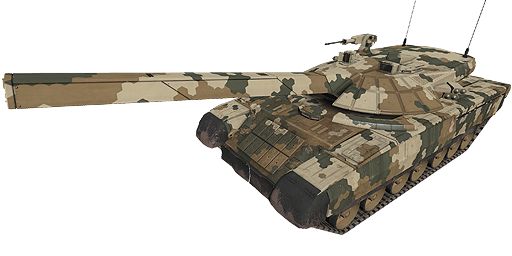
Well, It's a good thing i still have Arma 3 installed.
And now (finally), Time for a peak at the Futur(a)e.
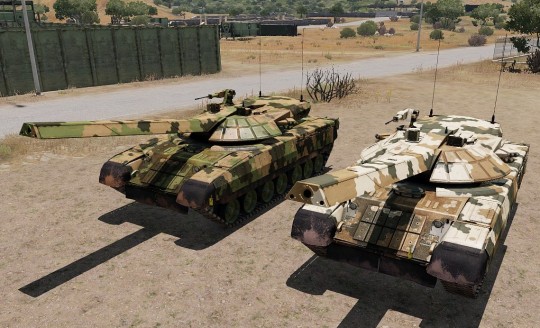
With More Pictures!
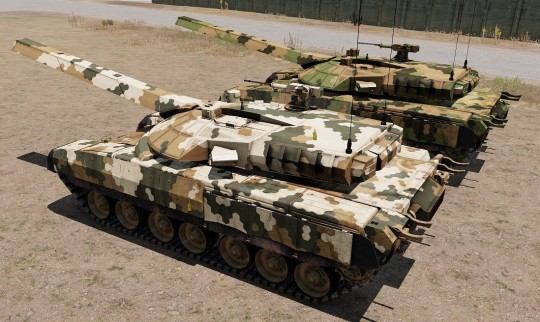

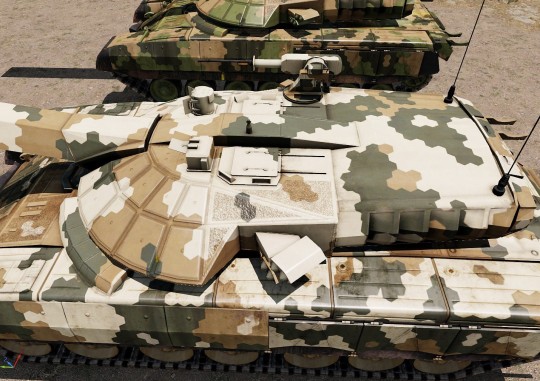
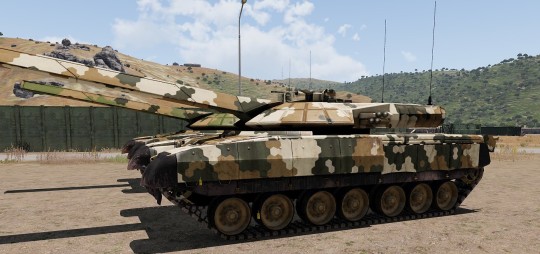
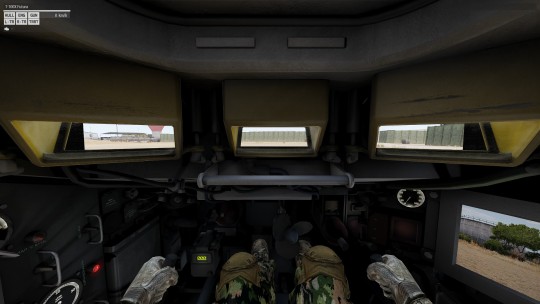
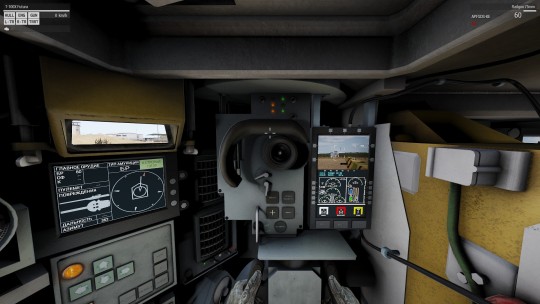
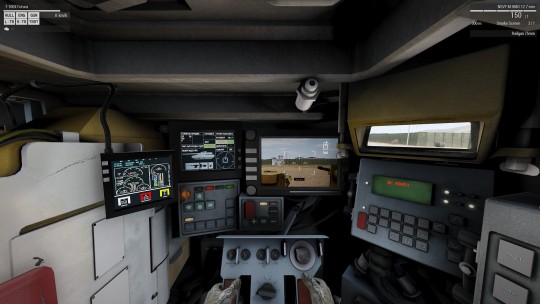
The armored Speartip to CSAT's tech arsenal.
It's based heavily on the Russian Object 640 "Black Eagle", which was a one-off prototype from a proposed upgrade program for the T-80. That program never got off the ground so Russia showed off the prototype a few times for propaganda.
It has Good mobility overall (though it is a little sluggish in reverse), and is quite nimble on it's treads.
This mobility comes at a price though, as it is the least protected out of its contemporaries. But it is still an MBT, so the armor it does have is fairly heavy.
And for the main event, The Railgun. It fires a 75mm dart at hypersonic velocities, allowing it to punch through the frontal armor of other MBTs at extremely long ranges. It's not all good news for the main gun though, as it has a lengthy charging cycle that must be completed before the railgun can fire the first round, as well as a long cooling cycle before it can fire the next one. It also needs its engine intact and running to be able to charge up a shot, which increases its fuel consumption. Another cause for concern is its lack of any high-explosive or anti-personnel rounds for the main gun, forcing it to rely on the commander's HMG (mounted in a remote weapon station and with only two 150-round belts) for close range defense.
Crew visibility is somewhat lacking, being mainly periscopes. The commander has pair of electronic sights, but the back-up periscopes only cover the right side of the turret. The gunner at least has an analog back-up for the main electronic sight. The diver's station has a rear-view camera.
The crew is 3, standard for a tank equipped with an auto loader.
The vehicle is outfitted with an appropriate array of hatches, handles, hooks, and holders for external fuel tanks.
It should also be noted that the ERA visible on the tank is all functional in game, although the Drozd APS visible on the sides of the turret are actually the smoke grenade launchers.
FINAL SCORES
Credibility: 9/10 - Dangerously Credible
Coolness: 7/10 - As Deadly As It Looks
BONUS
How can I mention ARMA 3 without Bringing up these three morons youtubers?
youtube
youtube
youtube
5 notes
·
View notes
Photo
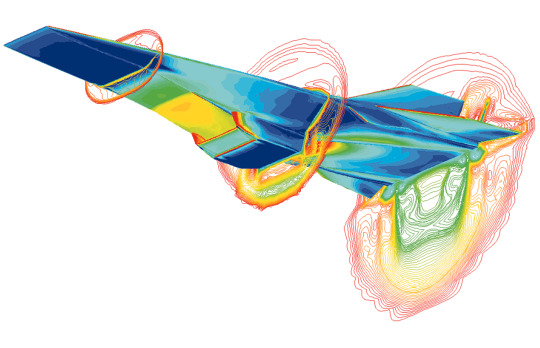
Nonsense About Hypersonic Weapons
There’s a media circus around hypersonic weapons. The media issue is threefold. One these weapons are hard to design and build, two we’re lagging behind Russia and China and three, and this is a critical part, we’re so far behind we’ll never catch up without more money.
Here’s a little history. In the ‘60s (yes the ‘60s) Kelly Johnson’s Skunk Works designed a seriously supersonic plane called the YF-17. It was a secret for over 10 years until the plane was accidentally renamed the Blackbird and broke speed records flying across the USA in the late ‘70s. It was not until 1990 that the plane was officially shown to and flown for the public – 25 years after Skunk Works first started secret test flights. Keep that time frame in mind.
Now, the USA is behind in the hypersonic weapons race. Nonsense. We’ve had prototypes flying since well before 2010. There were three test programs then, the HTV-2 from Kelly Johnson’s Skunk Works (HTV-1 is not mentioned but predates 2010 by 5+ years), X-51 (well, there were X-49 an X-50 before that), and HyFly – these two both from Boeing. Since then there have been prototypes aplenty flying all over the country, seven prototypes in all from Lockheed Martin (ex-Skunk Works), Raytheon/Northrup Grumman, Dynetics/Sandia, Lockheed Martin/Dynetics, Sandia/Dynetics, Boeing and Lockheed Martin/Rocketdyne. Some of these are Air Force projects or DARPA/Airforce projects, or Army/Navy projects, or just plain Army projects.
The testing breaks down into two types of hypersonic systems: Scramjet or Boost-glide. In the first you air-launch the vehicle and a scramjet engine turns on and it zooms away at fantastic speeds at high altitude (usually). What’s a scram jet? Well, the combustion inside the casing is so intense that the engine needs more and more air to fuel the fire and the engine literally sucks its way faster and faster, especially at high altitude where the air is thin. In the Boost-glide vehicle, a rocket takes the vehicle to a very fast high altitude (sometimes just into space), aims it down towards a target and speed and gravity handle the rest. Some of these are long range weapon delivery vehicles like the LRHW (yes, that means long range hypersonic weapon – catchy, no?) and some are meant to be carried closer to target by conventional planes and launched towards target but at hyper-velocity speeds (Mach 5+) that an enemy will have little defense for.
And are these weapons ready to combat the China and Russia threat? Publicly? No. The Air Force, Army, DARPA, and Navy want more funds, the Pentagon wants more secrecy, the manufacturers want contracts that never end. And the media only gets snippets of information of tests that “failed to reach objectives,” “need more development” or “we’re trying to catch up.” Oops, we’ve seen this dance before. Mike White, the Pentagon principal director for hypersonic vehicles is quoted saying, “For operational security reasons, we cannot disclose the number of hypersonic flight tests and dates…. Across the department, we have dramatically increased the number of hypersonic flights tests in the past few years…” Translation? We’re having flight tests, not trials. The vehicles fly and we’re ready for next steps and newer, more expensive, models.
What, you thoughts the Blackbird program of the ‘60s, ‘70s and 80’s ethic was a one off?
3 notes
·
View notes
Text
Non-Proliferation or Modernization? The Dilemma of Contemporary Nuclear Policy
The global nuclear landscape stands at a crossroads, torn between two competing imperatives: preventing the spread of atomic weapons and modernizing existing arsenals. While the Treaty on the Non-Proliferation of Nuclear Weapons (NPT) remains the cornerstone of global non-proliferation efforts, major nuclear powers continue to invest in upgrading their nuclear capabilities. This contradiction has sparked debates over whether modernization strengthens deterrence or undermines non-proliferation goals. As geopolitical tensions rise, policymakers must navigate this dilemma cautiously, balancing security interests with the broader objective of nuclear disarmament.
The Fragility of the Non-Proliferation Regime
The NPT, established in 1968, was designed to curb the spread of nuclear weapons while promoting peaceful atomic energy and gradual disarmament. However, the Treaty faces increasing pressure as new geopolitical realities emerge. Some non-nuclear states argue that the Treaty disproportionately benefits nuclear-armed countries, which have failed to make meaningful progress toward disarmament. The slow pace of nuclear reductions, combined with ongoing modernization efforts, has fueled skepticism about the commitment of significant powers to the Treaty’s objectives.
Meanwhile, potential proliferators such as Iran and North Korea challenge the effectiveness of the NPT framework. North Korea’s withdrawal from the Treaty and subsequent development of nuclear weapons have exposed weaknesses in non-proliferation enforcement. Similarly, Iran’s nuclear program continues to generate concerns, especially after the collapse of the Joint Comprehensive Plan of Action (JCPOA). These cases highlight the difficulty of preventing determined states from pursuing nuclear capabilities despite international agreements.
To strengthen non-proliferation efforts, policymakers must address these gaps by improving enforcement mechanisms and ensuring that nuclear-armed states adhere to their disarmament commitments. Without tangible progress, the legitimacy of the NPT could erode, encouraging more countries to seek nuclear weapons as a means of security.
The Push for Nuclear Modernization
While non-proliferation efforts remain a global priority, nuclear-armed states continue to upgrade their arsenals. The United States, Russia, China, and other nuclear powers are investing in advanced missile technology, warhead miniaturization, and improved delivery systems. These modernization programs are justified to maintain credible deterrence in an evolving security environment.
The United States has committed to a multibillion-dollar nuclear modernization program, including the development of new ballistic missile submarines, intercontinental ballistic missiles (ICBMs), and nuclear-capable bombers. Russia has pursued similar initiatives, unveiling hypersonic weapons and advanced strategic missile systems. Meanwhile, China is expanding its nuclear arsenal at an unprecedented rate, moving toward a more robust atomic triad with mobile ICBMs, submarines, and long-range bombers.
Proponents argue that modernization is necessary to maintain deterrence against emerging threats, such as cyber warfare, hypersonic weapons, and artificial intelligence-driven military strategies. However, critics warn that these advancements blur the line between conventional and nuclear capabilities, increasing the risk of miscalculation and unintended escalation. Moreover, modernization efforts undermine disarmament pledges, persuading other nations to forgo nuclear ambitions difficult.
The Role of Emerging Technologies
The intersection of nuclear weapons and emerging technologies has further complicated the modernization-versus-non-proliferation debate. Artificial intelligence, quantum computing, and cyber capabilities have the potential to reshape nuclear deterrence and crisis stability. AI-powered early warning systems, for example, could enhance threat detection and increase the risk of false alarms and preemptive strikes.
Cybersecurity threats to nuclear command-and-control systems pose additional concerns. If an adversary successfully hacks into an atomic state’s control infrastructure, it could disrupt launch protocols or manipulate data, leading to catastrophic miscalculations. As nuclear states integrate AI and cyber capabilities into their strategic planning, policymakers must consider how these technologies affect crisis management and atomic stability.
Another significant development is the rise of hypersonic weapons, which travel at speeds exceeding Mach 5 and can evade traditional missile defense systems. These weapons compress decision-making time, leaving leaders little room for de-escalation in a crisis. The introduction of hypersonic nuclear delivery systems by multiple nations has raised concerns that a future conflict could escalate rapidly before diplomatic efforts can intervene.
Addressing these technological challenges requires international cooperation and updated arms control agreements that reflect modern security threats. Without clear regulations, emerging technologies could destabilize existing deterrence frameworks, increasing the likelihood of accidental or unauthorized nuclear use.
The Risks of a New Arms Race
The pursuit of nuclear modernization and rising geopolitical tensions have led to fears of a new arms race reminiscent of the Cold War. The U.S.-Russia nuclear rivalry remains a central concern, particularly with the erosion of key arms control agreements. The withdrawal from the Intermediate-Range Nuclear Forces (INF) Treaty and uncertainty surrounding the future of the New START treaty have left strategic stability in question.
Beyond the U.S. and Russia, China’s rapid nuclear expansion has altered the balance of power, prompting concerns about a tripolar atomic competition. Meanwhile, regional rivalries in South Asia and the Korean Peninsula continue to escalate, with India, Pakistan, and North Korea refining their nuclear capabilities.
Unlike the Cold War, where arms control negotiations significantly prevented escalation, today’s multipolar nuclear environment lacks comprehensive agreements that include all major players. Without renewed diplomatic engagement, the unchecked expansion of atomic arsenals could increase the risk of miscalculation, crisis instability, and unintended conflict.
Major nuclear powers must prioritize dialogue and transparency to prevent a full-scale arms race. New confidence-building measures, verification mechanisms, and crisis communication channels are essential to mitigating the risks of nuclear competition in an increasingly fragmented world.
Toward a Balanced Approach
Navigating the tension between non-proliferation and modernization requires a pragmatic approach that acknowledges security concerns and long-term disarmament goals. While nuclear states argue that modernization is necessary to maintain deterrence, they must also demonstrate a genuine commitment to reducing the role of atomic weapons in their security policies.
One possible solution is adopting arms control measures that allow for limited modernization while imposing strict constraints on arsenal expansion. Updating existing treaties or establishing new agreements incorporating emerging nuclear players, such as China and India, could enhance strategic stability. Additionally, renewed diplomatic efforts to revive the JCPOA and prevent further nuclear proliferation in the Middle East would strengthen the non-proliferation regime.
International organizations such as the United Nations and the International Atomic Energy Agency (IAEA) also play a crucial role in monitoring compliance and fostering dialogue. Multilateral forums that unite nuclear and non-nuclear states can help bridge the divide between modernization efforts and non-proliferation commitments.
Ultimately, the future of nuclear policy depends on the willingness of major powers to find common ground. By balancing deterrence needs with responsible arms control initiatives, the international community can work toward a world where nuclear weapons are less central to global security. The challenge is immense, but failure to address it could lead to a more dangerous and unstable atomic future.
0 notes
Text

*The New Mental Battlefield, "Beam me up, Scotty"*
Weaponized Drones and Psychotronic Weapons...
The alarm sounded at 8:00 a.m. for an appointment at 10:30. The use of military, weaponized, psychotronic drones, play a major role in the official tracking and monitoring setup around me both inside and outside my house. Before I turned onto the freeway, through the beamed communication system, one of the urban cops could be heard saying, "Why are you doing that. she's just going to post it online" as my breast yet again began tingling and itching from the drone for a minute then abruptly stopped.
He was right!
Things quieted down until about an hour ago 6:45 p.m. As I sat watching TV, the beamed torture began. The focused this time on the entire side of my right breast. The beamed communication system from neighboring locations indicates that the shift has changed and military personnel are now active and at the helm.
Video Example of Beamed Communication Devices:
Things quieted down until about an hour ago at 6:45 p.m. As I sit watching TV, the beamed slow cooking of breast tissue has begun again. The deadly focused at this moment is on the entire side of my right breast. The beam communication system indicates military personnel are now around.
Example of Beam Communication System Videos:
youtube
Additional Psychotronic Links:
https://press.armywarcollege.edu/cgi/viewcontent.cgi?article=1871&context=parameters
https://www.ipcs.org/comm_select.php?articleNo=322
0 notes
Text

"#Hypersonic Air-Launched Offensive Anti-Surface Warfare is a carrier-suitable, long-range, high-speed, anti-surface weapon system. The #HALO System shall be fielded no later than FY29 to meet Early Operational Capability and no later than FY31 to meet IOC requirements" ~US Navy
@AirpowerNew1 via X
28 notes
·
View notes
Text
'Lack of Legal Guardrails': Hundreds of Millions of US Research Dollars are Helping China's Military, House Report Finds
Taxpayer-funded grants to state-tied Chinese academic provide 'back-door access' to CCP
The American government is pumping hundreds of millions of federal research dollars into research projects that are spurring Chinese advancement in cutting-edge military technologies, including "hypersonic weapons, artificial intelligence, fourth generation nuclear weapons technology, and semiconductor technology," a new congressional report has found.
"Due to a lack of legal guardrails around federally funded research, hundreds of millions of dollars in U.S. federal research funding over the last decade have contributed to the PRC’s strategic goals by helping the PRC achieve advancements in dual use, critical, and emerging technologies," the House Select Committee on China wrote in a report published late last month.
The findings, compiled as part of a year-and-half-long investigation, show how major American universities are using federal funds to partner with Chinese institutions on a range of research projects that feed the communist nation's military. The bulk of this work is fueled by taxpayer grants from the Pentagon and U.S. intelligence community, providing "back-door access to the very foreign adversary nation whose aggression these capabilities are necessary to protect against," according to the committee.
While American funding for research projects that involve Chinese universities has long raised concerns in Congress, the extent to which the federal government funds such projects has remained opaque. The China committee’s investigation marks one of the most comprehensive reviews to date on how taxpayer funding from America’s defense establishment ultimately builds up Beijing, giving its military a critical edge as diplomatic relations between the United States and communist China deteriorate.
The committee discovered more than 8,800 Pentagon-funded research projects that were conducted alongside Chinese academics affiliated with the country’s state-controlled institutions. Another 185 projects were backed by funding from the U.S. intelligence community.
3 notes
·
View notes